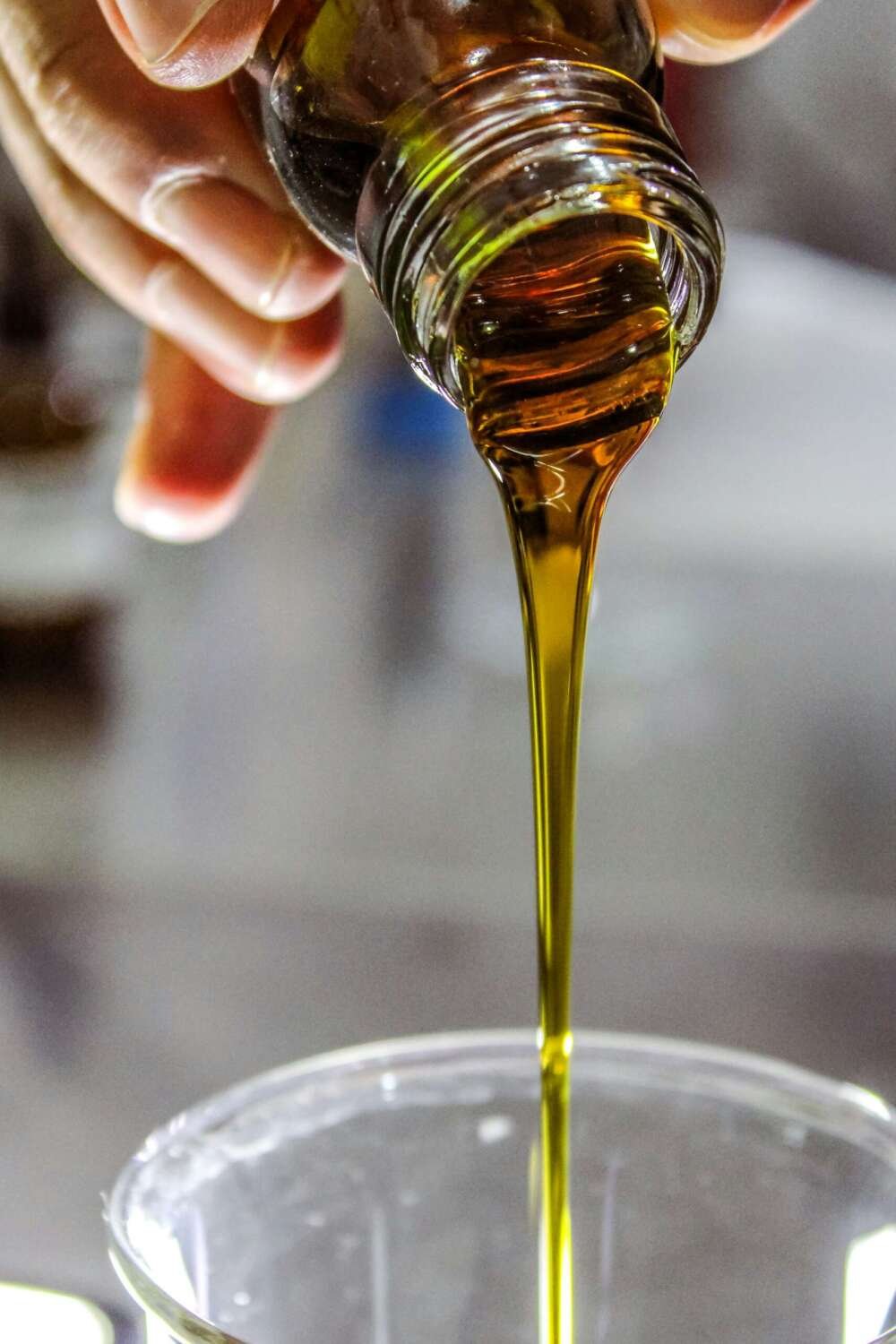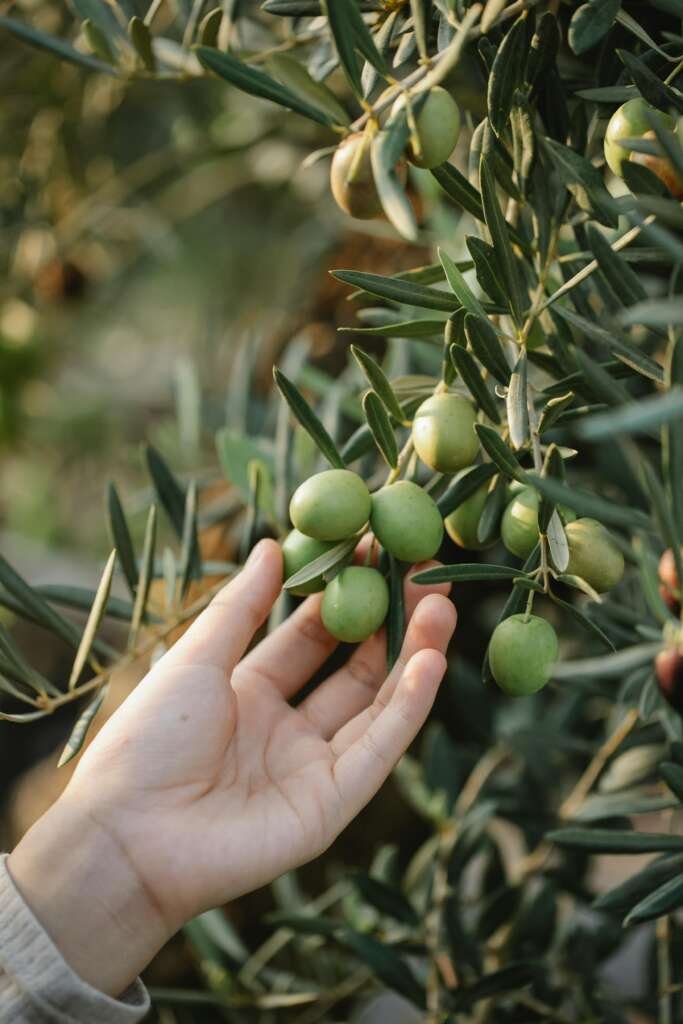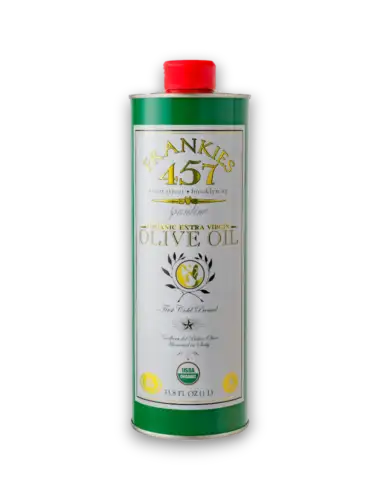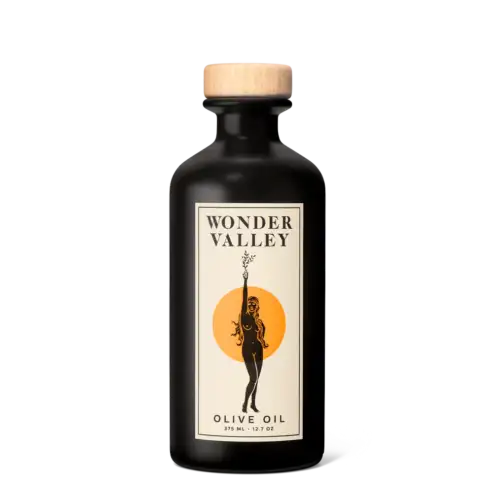How to Choose Authentic Olive Oil

Share This Article
The foods we eat have a direct impact on our health and the planet. But with reports of fakes, how can you tell which one is authentic? Recipe developer Marissa Stevens shares tips to know which ones on the shelf are authentic.
| All products featured on The Wellness Feed are independently selected by our editors for their environmental and ethical impact. However, we may earn an affiliate commission when you buy something through our retail links. |
Whether you’re soaking it into chunks of freshly baked bread or drizzling it over a crisp salad, you know the joy olive oil can bring to your food. That joy, brought on by its slightly grassy and nutty flavor, comes from quality olive oil. Buying it should be simple- just pick a bottle and go. But sometimes the truth is that some labels are misleading, and the products are mixed or diluted oils made with cheap ingredients. And, it doesn’t help that there are dozens of choices, all with different price points on the sold on the same shelf.
Knowing how to spot real olive oil from fakes keeps your kitchen heart healthy and delicious, and your wallet from supporting brands whose oils are farmed under unethical methods, leading to loss of biodiversity or deforestation. Always looking for authentic products sourced in ethical manners, we’re listening to our taste buds to weed out the authentic from the fake. And to learn how, we’ve turned to Marissa Stevens, Food Blogger and Recipe Developer at Pinch and Swirl. As a culinary expert with over 15 years leading home chefs to the best ingredients, she’s the perfect fit to share expert tips, clear signs of quality, and practical tricks to get true olive oil every time.
What Defines Authentic Olive Oil?

Real olive oil, especially extra virgin, comes from the first cold press of fresh olives. It’s pure, with no chemicals or blends, and retains the natural flavors and nutrients. “‘Extra-Virgin’ is the only term with strict chemical (≤ 0.8 % free acidity) and sensory standards,” Marissa explains. “Phrases like “cold-pressed” or “first-pressed” sound nice but aren’t legally defined.” These and other phrases like refined or pure olive oil often denote lower grades that often use leftover fragments or are processed with heat to stretch their shelf life, losing most of the original taste and health benefits.
Another defining factor of authentic olive oil is its flavors. Manufacturers who focus on small-scale, careful production create boutique olive oils featuring unique regional flavors. These usually have a stronger aroma and a more vibrant taste compared to mass-produced industrial oils. According to Marissa, you’ll recognize these differences due to the product’s distinct taste. “Expect notes of freshly cut grass or green tomato and a peppery tickle at the back of your throat. If it’s bland or greasy, it’s either old or never met the extra-virgin standard.”
Another thing to note is the place of origin. A vague origin line (“Packed in Italy”) or no harvest date is a warning sign. Real producers celebrate their grove location and vintage, while counterfeit blends stay non-specific and taste muted.
Why You Should Avoid Fake Olive Oil
If it sort of tastes like olive oil, why should you care whether it’s real or not? One reason is that consuming fake olive oil can pose health risks since some adulterated oils contain cheaper cooking fats that do not have the same health benefits. For instance, extra virgin oil is pressed mechanically and maintains the presence of phenols, compounds naturally occurring in plants-based foods that have antioxidant, anti-inflammatory, and neuroprotective benefits. Sometimes cheaper oils like sunflower, corn, and soybean contain dyes and additives to mimic olive oil. These substances can trigger allergies or digestive issues. And fraudulent practices hurt local farmers and the economy by letting counterfeiters profit illegally.
Fake oils also ruin your cooking experience—no matter how good your recipe, fake oil can turn it flat or bitter. Supporting ethical farmers and brands by shopping for good olive oil for salad is one way to elevate your culinary experience and health.
Expert Tips for Identifying Genuine Olive Oil
For Marissa, it begins with certifications. “Certification first, pack date second.”
Look for official quality marks such as PDO (Protected Designation of Origin), PGI (Protected Geographical Indication), or certifications from reputable organizations like the EVA (Extra Virgin Alliance) and the NAOOA (North American Olive Oil Association). These indicate a high level of authenticity and quality.
Next look for brands that list the country and region where the olives were grown. If just says “Olive Oil” with no details, be cautious. “A vague origin line (“Packed in Italy”) or no harvest date is a warning sign. Real producers celebrate their grove location and vintage, while counterfeit blends stay non-specific and taste muted,” Marissa explains.
Actionable tip: Confirm the certification logo appears clearly on the label. Visit the brand’s website for verification if needed.
Evaluate the Packaging and Bottling
Olive oil is sensitive to light, which can degrade its flavor and health benefits. High-quality bottles are dark glass or metal containers that protect the oil from sunlight. Avoid oils in clear bottles and plastic—they spoil faster. As Marissa puts its, “Plastic lets in both oxygen and light, two big enemies of fresh oil. Dark glass or tins offer far better protection.”
Some brands take extra care by packaging their oil in tins or opaque bottles, showing their commitment to quality. Proper packaging helps preserve the oil’s aroma and freshness longer.
Expert tip: Avoid plastic containers. Marissa explains that, “Anything in clear plastic or with fuzzy origin details stays on the shelf.” Dark glass or tin containers are clear wins in ensuring that you’re buying quality olive oil.
Read the Harvest and Best-by Dates
When shopping for good olive oil for salad, freshness is one of the clearest signs of quality. Some bottles display harvest dates, which tell you exactly how fresh the oil is. A good rule: always choose the most recent date. “A harvest date (not just a vague “best by”) plus a clearly named region or estate. The closer you are to that harvest date—ideally within 12 months—the livelier the flavor,” Marissa explains.
If only the bottling date is listed, aim for oils bottled within a year of the harvest date. The older the oil, the less flavor and nutrients it contains.
Expert insight: Fresh, high-quality olive oil is best used within 1-2 years of harvest. Its authentic flavor diminishes over time.
Assess the Price and Source
Price often reflects quality. Authentic extra virgin olive oil may cost more—think $10 or more for 250ml. If an oil is very cheap, it’s probably mixed or fake.
Buy from reputable stores or trusted producers. “When I can buy directly from a farmer I know, that beats any label,” Marissa says. Direct purchases from olive farms or farmer’s markets reduce the risk of fake oils. This way, you are more likely to get pure, genuine products.
Do A Simple Taste Test
Smell and taste are surprisingly effective. Pour a small amount into your hand or a spoon. “Expect notes of freshly cut grass or green tomato and a peppery tickle at the back of your throat. If it’s bland or greasy, it’s either old or never met the extra-virgin standard,” Marissa shares.
- Smell: authentic olive oil should have a fruity, grassy, or peppery aroma. If it smells like playdough, wax, or has no aroma, it’s suspect.
- Taste: real olive oil balances bitterness and pungency. It shouldn’t be flat or greasy.
Note: These tests aren’t foolproof but can guide your judgment when combined with label checks.
Storing Olive Oil Properly
While you might be tempted to store your good olive oil for salad on your sunny kitchen counter, where you can easily see it, don’t. Instead, store olive oil in a cool, dark place away from heat sources like stoves or sunlight. Keep bottles tightly sealed to prevent oxidation. Proper storage preserves flavor and nutrients, helping your oil stay authentic longer.
Periodically taste or smell your olive oil, especially if stored long-term. Look out for changes in aroma or flavor, which could indicate spoilage or dilution. Refining your eyes and nose helps you recognize fake or stale oils quickly.
Stay vigilant, keep learning, and always prioritize true, fresh foods for your health and your kitchen. With expert tips such as these, you can make smarter, informed decisions that will quickly become second nature. Your taste buds and body will thank you.



